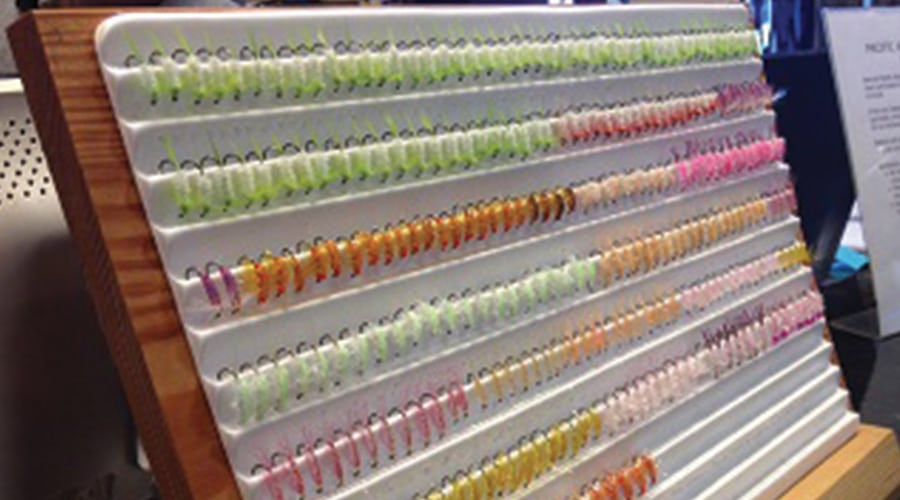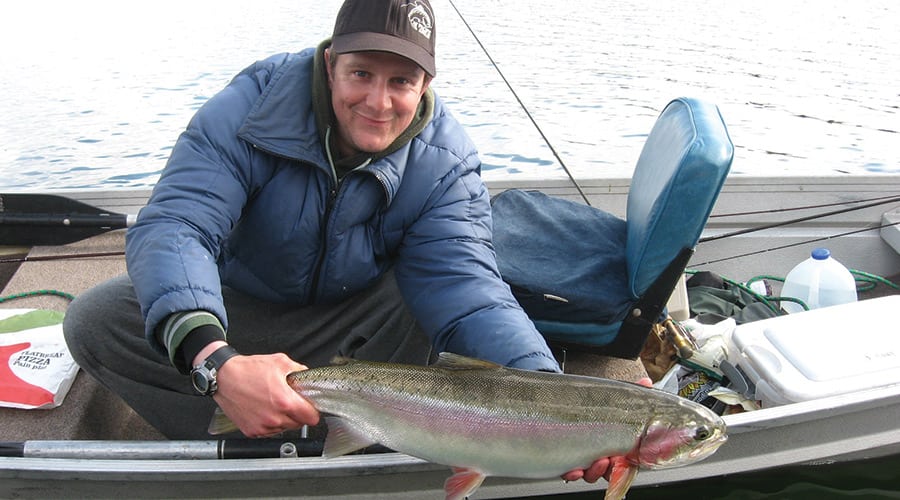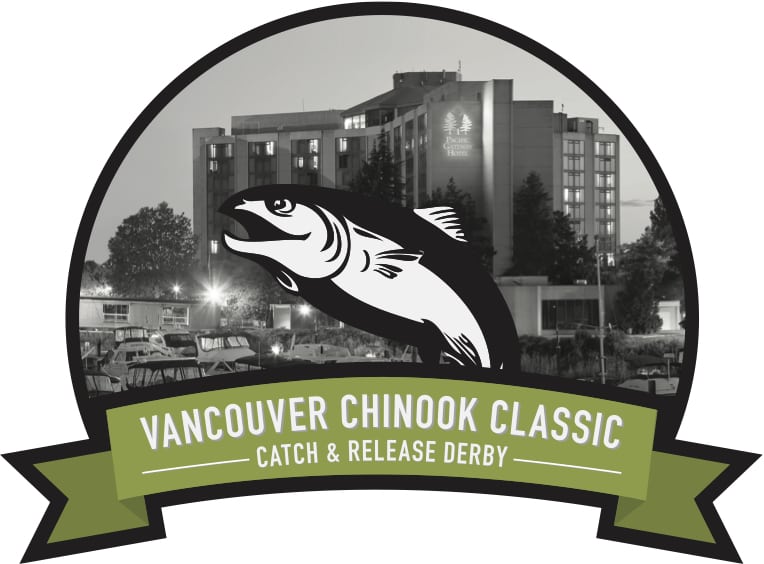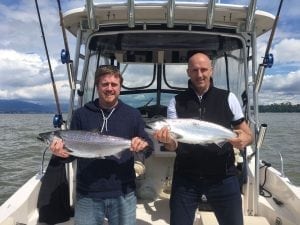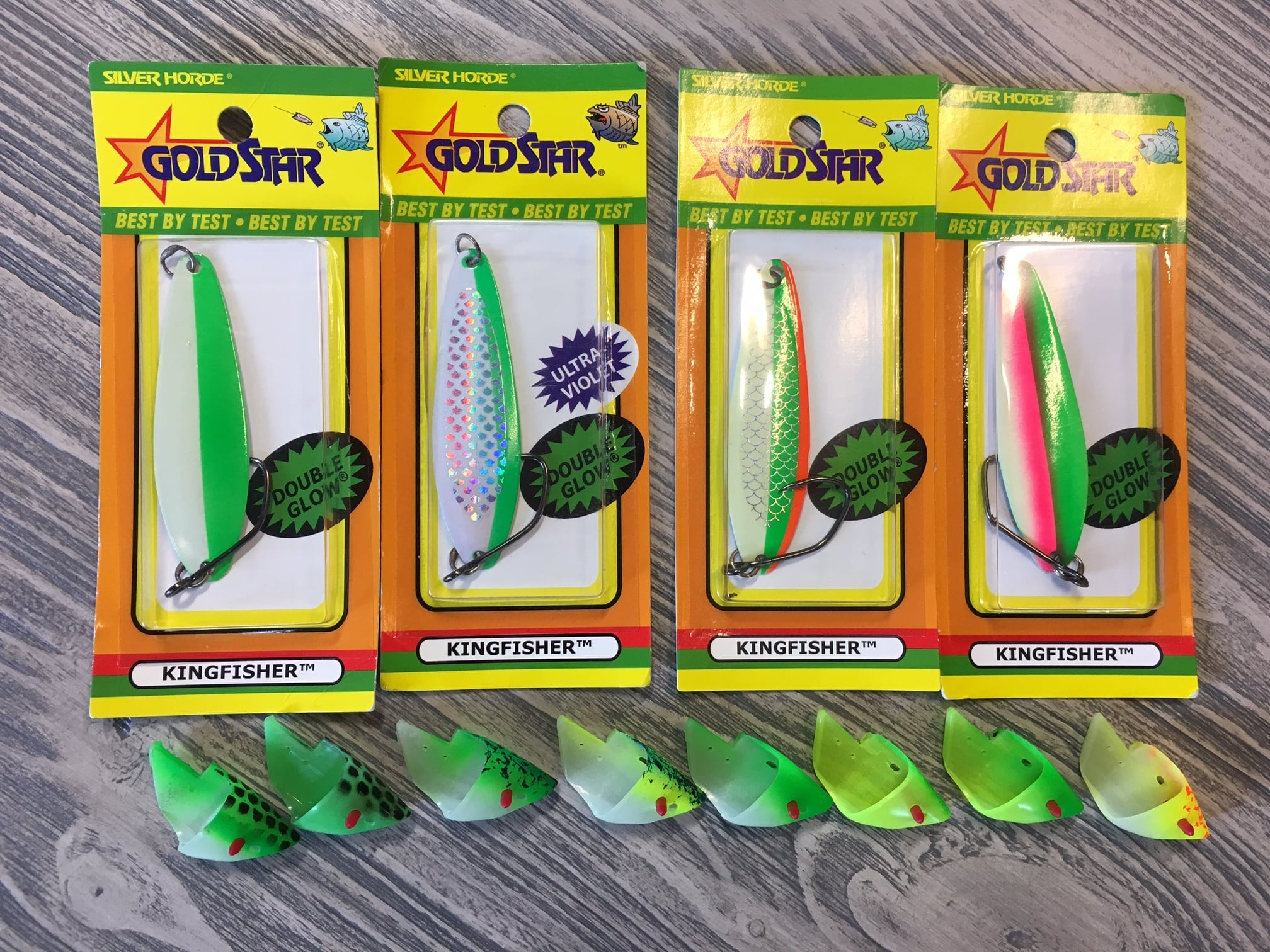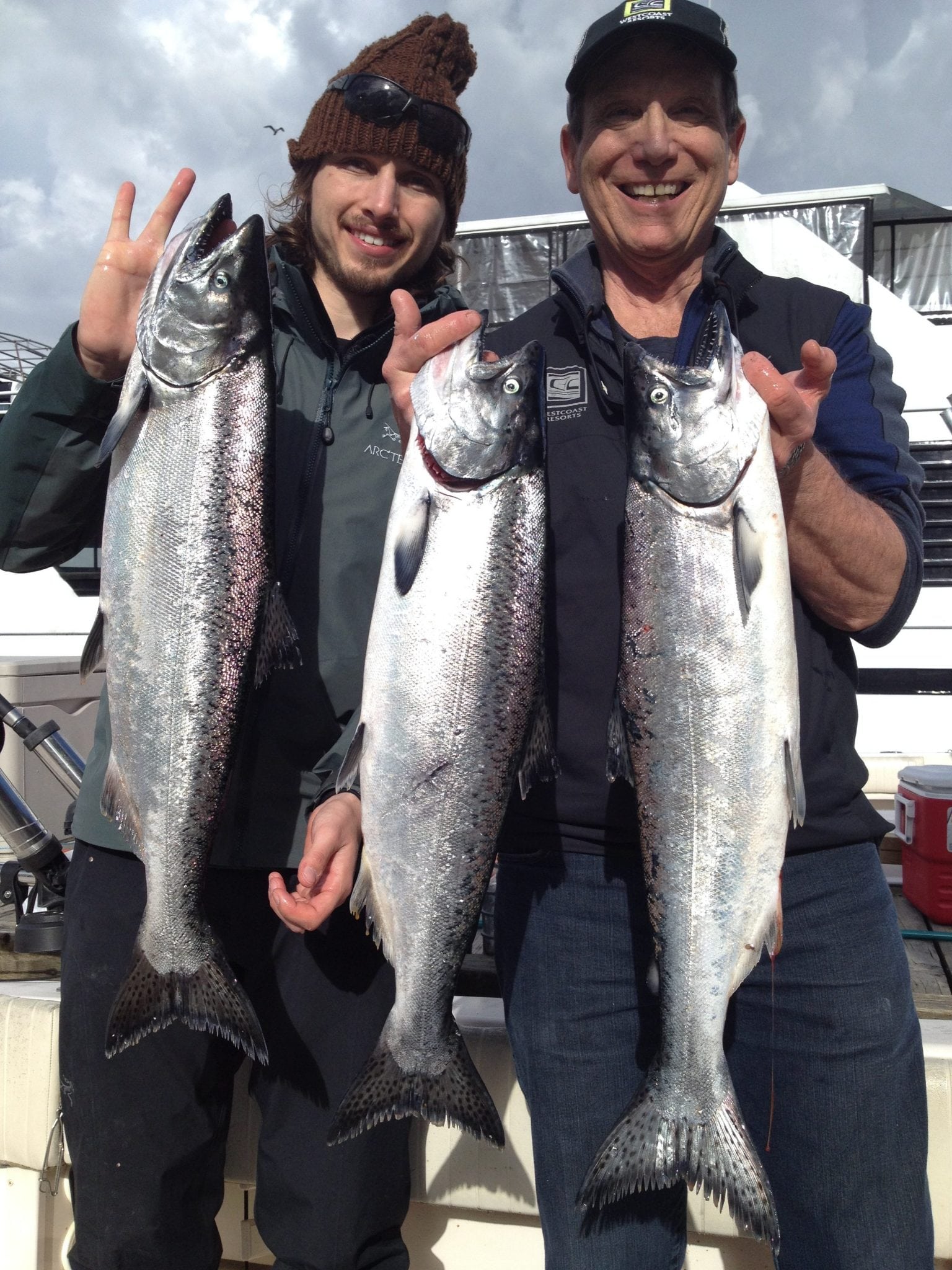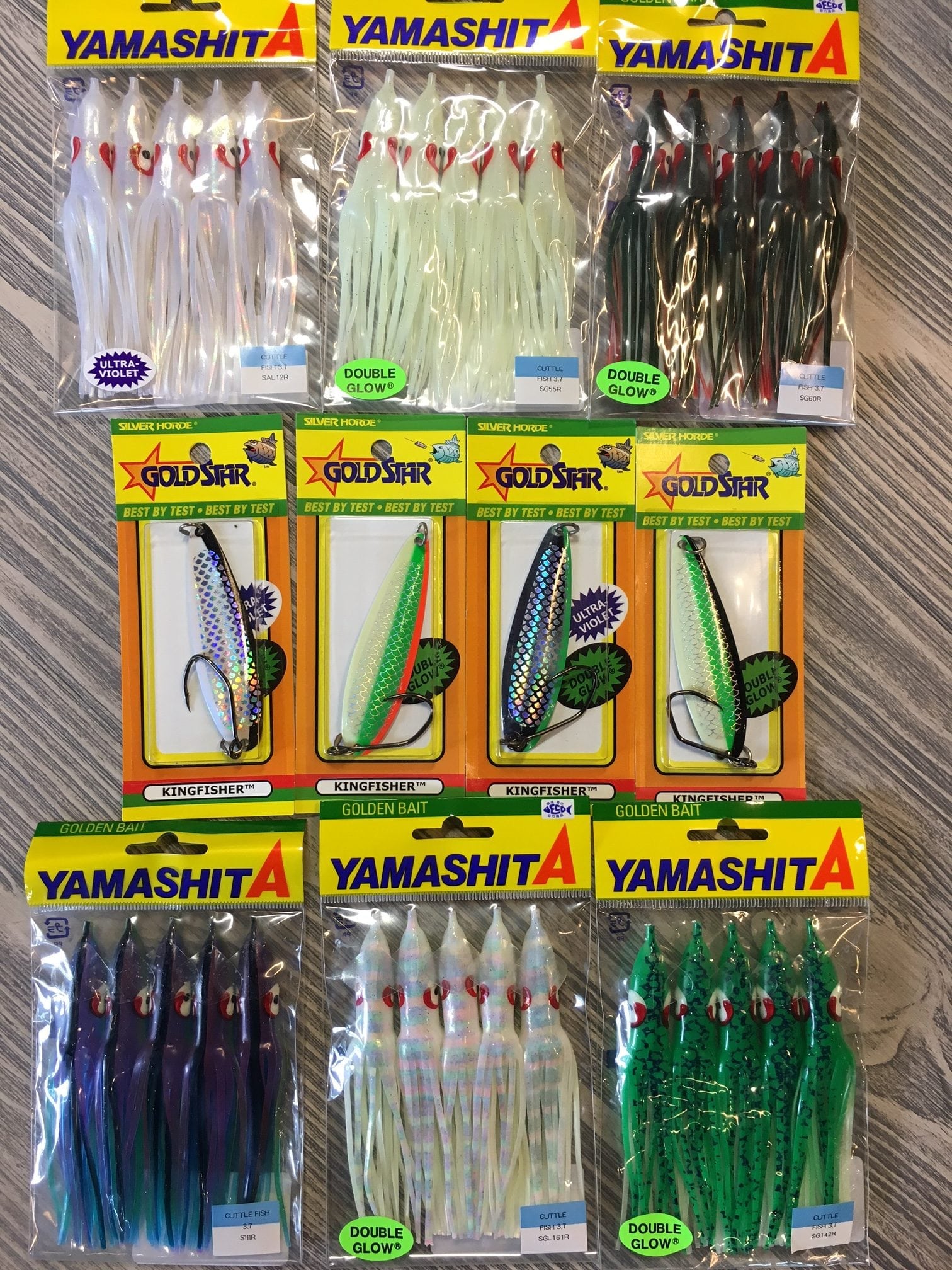OUTLOOK
The long weekend is almost upon us! We’re looking forward to the sunshine and hitting the water this weekend. We can’t wait to hear about all your long weekend trips.
In the interior lake fishing is heating up, and good reports are rolling in daily. Andre has a quick overview below so be sure to read that if you’re headed to the interior this weekend. Though river fishing is slowing down with the heat and high water there are still a few windows of opportunity. There are also many other fisheries to explore – including the bass fishery. Check out the overview of that in this week’s report.
Saltwater fishing continues to be excellent. The season is off to a solid start so hopefully that is a sign of things to come for the rest of the season!
We know many of you have big plans for the long weekend but if you are thinking further ahead into the summer be sure to mark the dates for the Vancouver Chinook Classic fishing tournament down in your calendar. This is a not to be missed event with the largest cash prize in the city!
Enjoy your long weekend and remember we’re open tonight until 7PM if you need to stock up before your trip. We’ll be closed on Monday to get a little fishing in ourselves! See you in the shop or on the water.
CLASSES AND COURSES
There are still a few spots left in our upcoming May courses! Give the shop a ring today at 604.872.2204 to grab your seat in these great courses.
Tying Beach Fly Patterns
Join Pacific Angler for a 3hr evening seminar of tying flies specific to catching salmon on our coastal beaches. Without a doubt, fly selection is critical while beach fishing. These flies are often not commercially available, so successful beach anglers learn to tie their own patterns. Your instructor will walk you through each fly pattern step-by-step. This course is suitable for fly tiers with a basic knowledge. Students are required to supply their own vise, tools and materials. A 10% discount is available on materials and tools purchased for the course.
Cost: $45.00
Dates: May 24
Time: 6:30pm – 9:30pm
Introduction to Fly Fishing Lakes
This course will give you an in-depth look at the fundamentals of fly fishing lakes. We explore equipment, techniques, major insect hatches and ideal lakes to begin with. You will learn all you need to plan your next successful lake trip to one of BC’s 5,000 lakes! This course is comprised of one 3hr evening seminar.
Cost: $45.00
Dates: May 30
Time: 6:30pm – 9:30pm
INDUSTRY EVENTS
Vancouver Chinook Classic – August 19 and 20, 2017
Are you thinking about summer? We are and are looking forward to the Vancouver Chinook Classic. The Vancouver Chinook Classic is a premier 2-day Catch and Release Salmon Fishing Event hosted annually at the new Pier 73 Marina at the Pacific Gateway Hotel.
REGISTRATION IS NOW OPEN for the tournament and at $300 per angler (supply your own boat) you can’t beat that for an amazing weekend and a chance at the largest cash prize of any fishing derby in Vancouver!
Don’t have your own boat? Experience the Vancouver Chinook Classic on one of our Grady White boats outfitted with the best tackle and fully guided for $1,000 per day (non-inclusive to angler fee). To inquire contact us on our charter line at 778.788.8582.
More details on this not to be missed tournament weekend here!
FRIDAY FEATURE PRODUCT
Advanced Sunglass Tips –Warmwater Fishing
Matt travelled to Christmas Island last month. Many of you have been asking for the report on how it went? The over used word “epic” has been thrown around the shop when the guys have been talking. Matt is writing a very detailed report with all the ups, downs and what you need to know if you are considering Christmas Island (CXI) as a warmwater fly fishing destination. This report will be up in next couple weeks but as a teaser Matt has some great product reviews and product strategies that the group learned from hands on, salt soaked, sun bleached field testing.
This week we are taking a look at the sunglasses used on the trip. Sunglasses are debatably one of the most important tools in a flats fisherman’s arsenal.
One of the cool aspects of this trip was that we conscripted Captain Mike Hennessey of Hawaii on the Fly to join us. Mike is one of the top guides in Hawaii, lives and breathes saltwater fly fishing and calls CXI his second home. Every time I have fished with Mike I feel as though I have attended an Ivey League graduate class on flats fishing… just add cursing and a Rage Against the Machine mixed with Pink Floyd soundtrack.
Needless to say Mike is a master at spotting fish. There are many guides that have impressed me with their fish spotting skills. They can see fish that you can’t see. Then there are guides that blow your mind. They can spot fish you can’t see but instead of leaving you frustrated they teach you how to see them. Mike is of the rare latter class.
What did I learn? He takes sunglasses very seriously. More specifically he takes the tint of the lenses very seriously. Most new anglers think that grey or blue lenses work best for the sunny conditions or flats fishing. Ironically enough grey lenses can be completely debilitating when spotting fish in the shallow waters. If you are blessed with clear skies and the sun is 45 degrees off your back, then sure – grey lenses work – but even the smallest cloud passing over the sun will turn the world dark and more importantly make it very difficult to see fish.
Brown lenses are the sweet spot for all round use. They are good in lower light and if a few clouds role in they keep the world bright enough to spot fish. This seems to hold true for most fishing situations around the world. It is why we recommend brown/copper tinted lenses for all types of fishing where you want to look into the water and don’t know if it will be sunny or overcast. Though the brown lens is my go to lens, when you really get serious about seeing into the water you can take it to the next level. Mike likes taking it to the next level and it why he is an “epic” warm water angler. He carries 3 different glasses and he is constantly switching to see what penetrates and lights up the water and bottom color best. Brown is still found on his head in ideal mid morning sunny conditions but early in the morning, late in the afternoon and if there are more than even a couple clouds in the sky he pulls out the “low light” yellow lenses.
I have been fishing yellow lenses on the west coast for years. I use them when I know rain is in the forecast. I love the fact that the world is less dreary, my eyes are protected and I have a hope of seeing fish. That said testing them on spotting fish is hard. If you are lucky and good you spot one or two fish a day when steelheading and some anglers go their entire lives without sight fishing a steelhead. It is just not a big enough sample size to make a definitive option on what lens color is best. The only problem is that you will tell the story of the sight caught steelhead or the 10lb+ bull trout or trophy rainbow for the rest of your life. Learning from the warm water boys on how they apply lens tints to different conditions might be worth it.
At Christmas Island you have the sample size to test. There are fish freaking everywhere. And the test results are definitive. We had a number of mixed cloudy days and the Low Light Yellow lens literally changed the game.
I can’t stress how much of a difference I saw with them early in the mornings, late in the afternoon and when more than 30% of the sky had clouds. I would guess I saw 20-30% more fish with them than brown lenses. The fishing gods only know how many than if I had been wearing grey lenses.
The Next level — To infinity and beyond
The last tint that Mike uses is a rose lense. I have yet to experiment with this tint but he swears by them. He uses them in specific situations when the sun is right over head or coming in at an angle that causes low light penetration but blinding glare. With the dramatic difference I saw in the brown to yellow lenses when properly applied to different fishing situations I will be purchasing a rose pair for my next trip to try out.
As you all know we are a little obsessed with sunglasses at the shop and it is for good reason. First off, good polarized sunglasses protect your eyes secondly they let you see into the water to spot slippery ES rocks so you don’t bail and ruin your day by going for a swim and third with a little eye training they will spot you fish. If you feel as though you need to take it to this next level this is the strategy. Eye training TOW (time on water) is always the most important factor but I believe that playing with sunglass tint (as long as you don’t let it distract from the fishing) will pay massive dividends for warmwater fishing and coldwater fishing.
Mike and I were fishing the Smith Chromapop brown lenses and the Smith Low Light Igniter Lenses. Another one of our favorites is the Maui Jim High Transmission Lens. The Maui Jims have some exceptionally cool frame colors and might be on my list for next year’s trip. I can’t say enough about the Chromapop brown lenses from Smith. In all the fish spotting tests they win in the brown lens world …period. I am excited to experiment more with the Low Light Igniter and the High Transmission lenses from Smith and Maui Jim. Both are of top quality and will be game changers in low light conditions. If you are looking for a great cost effective brown lens, look no further than Zeal and Suncloud. For the price you cannot beat the quality.
As this is the feature product review we will be selling all yellow lenses and brown lenses at the shop for 10% off for one week. When you come in, tell the guys you saw the sale in the fishing report and we will make sure you get the DEAL. Even if you are looking for an “epic” lens for this summer and want to use it fishing and on the patio, this will be the last sale on sunglasses for the season, so take advantage now!!
Matt Sharp
FRESHWATER FISHING REPORTS
Capilano River Fishing Report
Coho fishing on the Capilano River is just around the corner. While it is still early we have heard of a couple seen in the river and with the recent rains we have had no shortage of water early on with good (even heavy) flow. This is a great time to stock up on the necessities before the bulk of the run starts making its way in. When the water is at a good height in late May and early June, drifting roe and colorado blades can be deadly. Once levels start to drop it’ll be time to think about casting spoons and spinners or fly fishing with full sinking lines and small olive buggers and muddlers. If you are new to this fishery come swing by the Shop for some pointers on this urban fishery!
STILLWATER FISHING REPORTS
Interior Lakes Fishing Report
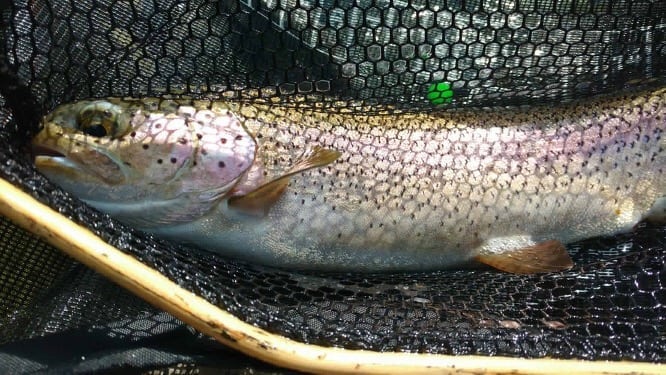
First off, an update on the road conditions on a couple of lakes. The road in to Tunkwa from Lac le Jeune has been repaired, the road to Roche is okay but the road to the west campsite is a bit rough with large potholes so take your time if you need to go in. Fishing has been great on both of these lakes with water temps hovering around 50 degrees, this means that the chronomids are hatching and the fishing is hot when you are dialed in. Courtney is another lake that has been fishing well this year with lot of big fish getting caught on leeches and now chironomids. If you want to take a break fishing bugs for a change try fishing a shiner imitation with a full sink line for the blackwater strain of rainbows that are in there. Peter Hope, Knouff, Leighton, Harmon, Corbett and Kane lakes are worth fishing this weekend. It is safe to say that lakes around 3600 ft are a good bet and any lakes that were iced off two weeks ago are fishing well.
On some lakes when the trout are not keyed in on a certain bug, trout will gorge on anything, I saw a video of the stomach content in a vile from a rainbow and there were blood worms, scuds, immature damsel nymph and water boatman all alive at the same time so be prepared to change up you presentation quickly until the fish start to go trough the regular cycle of hatches trough out the day. I have not heard any reports from the Caribou region yet but I will let you know as soon as I hear something.
Have a great long weekend,
Andre
2017 Bass Feature
While it is later than what we have become accustomed to in the last couple of years, recent warming trends have marked a much anticipated start to lake fishing season. For most people, “lake season” brings to mind chironomid fishing on an interior lake for trophy rainbow trout. However, warmer waters also mean that the time for bass fishing is upon us. These big-mouthed predators move up shallow in the late Spring/early Summer and become much more willing to chase down moving targets, making this a fun fishery for anglers of all experiences.
You may have seen tournament bass anglers on TV decked out with sponsor-clad jerseys and specialized gear, but if you have ever been intrigued by catching your first bass then I have good news for you; bass fishing can be as technical or as non-technical as you want it to be and while it can indeed get extremely technical, there is absolutely no need to invest hundreds of dollars on species-specific gear. Yes, like in many other fisheries those that do delve into more technical aspects will have more consistent success and consistently catch bigger fish. However, if you are looking to just tick this species off of your bucket list then there are a couple of simple setups that will get you in the game. A light to medium powered spinning rod/reel combo loaded with 8-12lb mono or equivalent braid and a handful of spoons, spinners, Bingo Bugs, and curly tails (with associated jigheads) will catch them with ease. My favourites are the Blue Fox Vibrax in size 2-4, Mepps Aglia, and Gibbs Crocs in 3/16 to 3/8 sizes. This is not much different from your typical Salmon/Trout rig but can open up a fun fishery without getting too involved.
For those that want to get a little deeper into the technical side of bass fishing, there are a few bass-specific lures and setups that you will want to get acquainted with. For lighter duty applications in open water or sparse weeds, a medium powered 6-7’ spinning rod or baitcasting rod is adequate. For heavily weeded areas error on the medium-heavy to heavy side of things with a spinning or baitcasting rod of similar length. A couple of my favourites that we have in the Shop are the Black Max baitcasting rod/reel combo and the TFO 7’ spinning travel rod (available in medium, medium-heavy, and heavy actions). When it comes to deciding on a spinning or baitcasting outfit, they both have their merits. I typically use the spinning gear for casting lighter presentations while I use my baitcasting rods for bigger lures or if I need to pitch into cover with pin-point accuracy.
Big bass like to hide in structure, and naturally these spots are snag magnets. This is where Texas rigs come in. Texas rigs consist of Extra Wide Gap hooks such as the Gamakatsu G-Lock which are used in conjunction with soft plastic worms or crawfish patterns and the hook point is either flush with the soft plastic or lightly embedded for additional snag protection. Sometimes snaggy areas can be fished with weedless topwater lures such as the Booyah Pad Crasher and the Matzuo Kroaker Frog; these lures get into hard to reach spots and with the right conditions can provide explosive surface strikes. If you are covering a large body of water and want to cover ground fast, search-baits such as Booyah Blade Spinnerbaits and Rapala Crankbaits are great for triggering active fish.
This fishery is definitely not exclusive to gear chuckers either. Bass will readily strike leeches, wooly buggers, muddler minnows…the list goes on. If they can fit it in their mouth it’s fair game, so don’t be afraid to go big. Better yet, you can do “dry fly” fishing for bass as well with Andre’s special Bass Poppers.
If you’re looking for something a little different from what we are used to on the West Coast, come down to the shop to learn more about this interesting fishery.
SALTWATER FISHING REPORTS
Vancouver Saltwater Salmon Fishing Report
We are well into the spring time chinook season and by all accounts it has been a great one. There continues to be good numbers of fish in the local waters, Howe Sound and over in the Gulf Islands.
Locally it has been consistently productive from the QA to the Bell Buoy both on the ebb and the flood tide. There have also been some fish out on the Hump. It hasn’t been lights out in either spot, but if you put your time in you will be coming back with some chinook. In both these areas the water has been dirty from the Fraser River freshet, and as a result the bait and chinook are shallow. Productive depths on the riggers have been 60-130. Some of the best flashers have been the Salty Dawg and Chartreuse Glow. A variety of spoons have been productive as well as herring and anchovies. For spoon colour and teaser head colour, choose something that has some glow and green on it. Below is a picture of some of our favorites.
There have been a few fish up at Hole in the Wall as there are still a lot of anchovies in that area. The fishing has been hit and miss as different schools of chinook move in and out of the area to feed. One day it is hot, the next very slow. Productive depths have been 60-120 and smaller spoons have been working like Coho Killers, Skinny G and 3.0 Kingfishers. Bait has also been productive, anchovies of course.
On the other side there have been some very good days from Nanaimo down to Porlier. There are definitely some good sized schools of chinook moving around these areas. The key word is moving around as one day the fishing is almost described as too easy and the next day you really have to grind hard to find the fish. Productive depths have varied immensely depending on water clarity. In the blue water the fish are deep, 175-225 on the riggers has been good. In the milky brown or milky green water the fish have been much shallower, 60-120 on the riggers. Spoons and hootchies have been producing well. Below is a picture of some of the top producers for that area. One thing to note is that the larger 4.0 and 5.0 spoons have been working well, as have larger sized hootchies often referred to as cuttlefish. This is because the fish have been full of 5 to 8 inch herring and the larger spoons and hootchies are closer to what the fish are feeding on.
We should have at least another month of good fishing for these spring time chinook and it will be interesting to see how the back half of this fishery pans out. Keep your eye out for some coho as well. Early reports are that it should be a good coho year in the Strait. Crabbing has been decent, not as good as some years, but still worth dropping the traps.
Jason Tonelli


